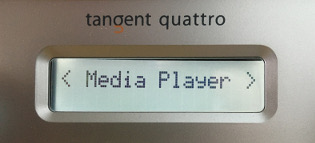
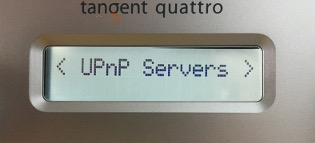
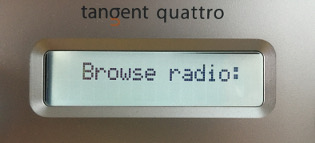
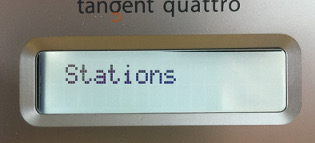


If a station is already playing the new one will be queued up. Click the Fast Forward (>>) button to move to the new station.
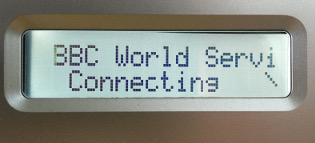

18th April 2021,
updated 25th August 2021
David at megapico.co.uk
At the end of April
2021 the Reciva internet radio station aggregator is due to
close down. This leaves the radios either useless, or dependent
on streaming via a media server running on a computer.
Building on the Sharpfin project which gives access
to the internal software of the radios it has been possible to
create a very tiny format media server that will run on the
radio itself. This makes it possible to stream radio stations
while also retaining the self-contained radio format. Your
favorite stations can be entered via a webpage on the radio and
then selected from the radio front panel almost like normal, but
going via the Media Player.
Version 1 of the media
server will stream radio from MP3 format station feeds (just
like the original Reciva radio). It has been tested with streams
from 24 to 320 kps.
Quick start - after
powering on the radio go to the Media Player, select UPnP
servers, and the rest should be obvious.
| 1 |
 |
2 |
 |
| Select
Media player from the radio top level menu |
Choose
UPnP Servers |
||
| 3 |
|
4 |
|
| The
Sharpfin media server running on the radio is called
"Browse radio" |
Choose
Stations |
||
| 5 |
 |
6 |
 |
| The
folders here are those you have organised through the
radio web interface. Some example stations are included. |
Select
the station you want. If a station is already playing the new one will be queued up. Click the Fast Forward (>>) button to move to the new station. |
||
| 6 |
 |
 |
|
| The radio will connect to your station. | When the station starts playing the duration you've been listening is displayed - the radio will behave like it's playing an everlasting track from the media server. |
If you change station
the new station will be added to the 'queue' since the radio
thinks you are queuing up individual tracks to listen to. Just
press the Fast Forward (>>) button to jump to the new
station.
You cannot pause and
time shift stations. If you pause the station it will pick up in
real time when you restart (other than a few seconds of buffered
data).
From the Radio Home
page of the Sharpfin web page look for the Station Management
entry.
Here you can upload
lists of stations and create folders to organise your stations.
If you click the name of an existing m3u stations list already
on the radio it will download so you can see the format and edit
it to contain the stations you want.
The stations listed
should be the actual stream addresses, not m3u or pls addresses.
If the station you want only lists a pls file just open this in
a browser and look inside it to find the real stream address. It
is this real stream address that needs to be stored on the
radio.
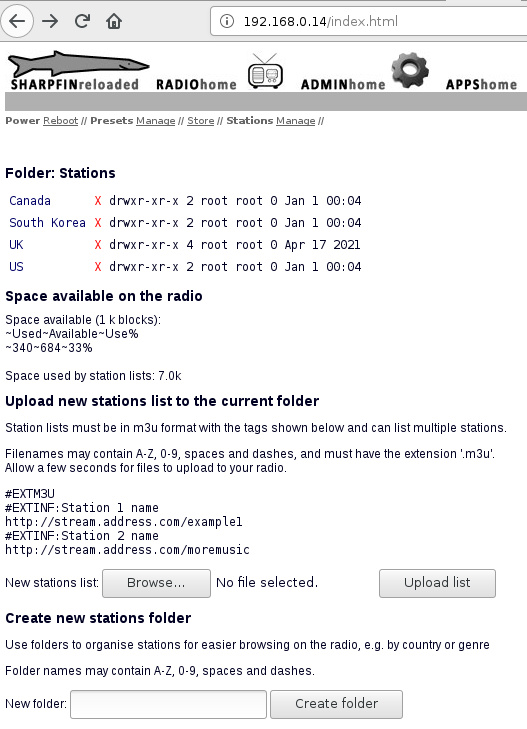
(1) If you change
through lots of stations it can get confusing as they are
'queued' by the radio. Use the Fast Forward (>>) button to
move to the next in the queue, or clear the whole queue by going
back up to the Media Player level and choosing Clear Queue.
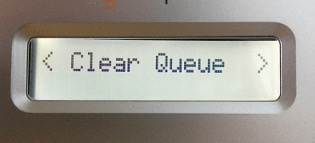
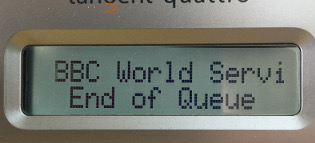
(4) If you have multiple radios running on the same wi-fi network and more than one of them is running the media server they may interfere with each other. In this case they can display strange text instead of the stations you expect listed. I had configured the media servers to be self-contained within the radio, but somehow their presence is found by other radios (a consequence of UPNP media servers being designed to advertise themselves across the network!). The immediate solution is to only run one radio at a time on the same WiFi network if using the internal media server. Improving this will be something to look at in the future.
If you decide to remove the Media Server (e.g. to make space on the radio to try out other options) this can be done using the standard Sharpfin package manager "ipkg".
The internal media server is based on existing open source software adapted for use on the radio.
Cross-compilation for
the Arm 920T processor used in the radios is in 2021 quite
difficult as this processor and the Linux 2.4 kernel running on
the radios is ancient and very different to modern Linux
distributions. The original Sharpfin project gives details of how to
do it, but it won't work on a modern 64 bit computer. Current
compilers available from Arm no longer cover this very old
processor. The solution here was to run a Linux distribution of
similar vintage to the radios using a virtual machine (Slackware
9.1, released in 2003, running on Virtualbox) and use that to
cross-compile the Arm format binary files. With this system the
original instructions
on cross-compilation can be followed.
Installation has been
found to take up 112k of the main storage area of the radio, and
needs a little more than this during the installation. This was
found to be available ok on the radios tested (see below) and
they still had 200-300k spare after installation. The station
lists are stored on a separate area to allow them to be updated
via the radio web interface. There's space to store in the low
100s of stations - the web interface shows how much space you
have left for this.
The installation and
running of the media server has been tested and works on the
following radios and service packs:
As with any Sharpfin
modifications to the radio the media server comes with no
warranty and you proceed at your own risk.